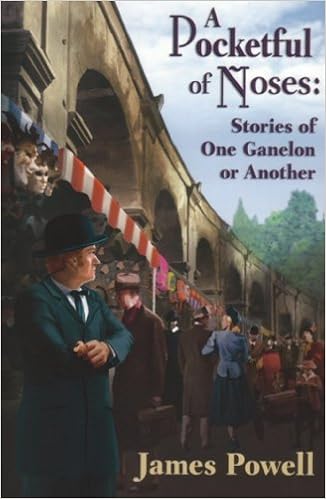You often hear, “The setting was so good it was another character.”
I get what they mean, but the pedant in me objects. No matter how well rendered, setting can never be a character, because a setting is a setting.
You can write a novel that could be set anywhere.
Some are simply vessels to contain all the other elements. Yet most fiction lives somewhere, and some settings can have an indispensable influence on character development and behavior. Paris in the 1920s. Needles, California. Mars.
I have this notion that culture and gravity are essentially the same.
Mighty forces so dominant and pervasive they go unnoticed during the day-to-day. Settings serve the same role. Below conscious thought, yet inescapingly shaping the outcome.
We know you can fail with a character, but can you screw up a setting?
It’s not easy, but one sure way is to overdo it. When a story is set in a tough part of town, I hate being constantly reminded just how bad it is. Everything smells foul, the food rotten, every guy’s a bad guy, the nuns spit tobacco and third graders keep .38s tucked in their Mary Janes. It’s worse when the characters trapped in these overwrought environments start reflecting on the ugliness of their situation. "Geez, Mick, this sure is a tough town.”
As with characters, settings benefit greatly from nuance.
As Paul McCartnery reminded us “There’s good and bad in everyone”, even if the ledger is lopsided one way or the other. If the characters stuck in the tent during a blizzard on Everest can’t snuggle into their sub-zero sleeping bags, at least once, I’ll let them complete the adventure without me.
If I write about a place, I have to have been there long enough to get a feel for all the sights, sounds and smells. I hear writers blithely declare that’s unnecessary when we have YouTube and video travelogues. This strategy’s doable, but it produces writing that’s phonier than a black wig on an octogenarian. Especially to those who live in your chosen location.
I edited a book once that had the protagonist spending some time in Hartford, Connecticut, a place I’ve hung around for about 40 years. Everything was off, including our major east-west highway that he had running north to south. I told him to fix all that stuff, which he found insulting.
“But it’s fiction!”
“Then don’t call it Hartford or we’ll have the insurance industry coming after us with pitchforks.”
My greatest admiration in this regard is for fantasy and science fiction of the world-building variety.
No one’s managed to travel to world for research, though a master of the form will really make you feel like they did. I’m far from expert in understanding this, but I think the key is having a basic frame of reference (Arrakis is really hot and dry, sort of like Saudi Arabia, Earthsea is wicked wet) that the authors extrapolate out to the extremes without slipping their moorings. It seems the most successful settings of the fantastical are also the most believable.
A lot of literary novels are set in academia, because lots of these writers are academics.
You can chart just how self-involved they are by the degree of blindness to their surroundings.
I’ve visited many serenely beautiful college campuses, often wondering how you can concentrate on organic chemistry when you have all these stately buildings and smoky little watering holes.
Literary academics, however, seem to be a hard lot, their aesthetic beings shriveled by existential angst.
Sure, you’re tormented because your wife is sleeping with a grad student and the dean of admissions, but you never noticed all that ivy?
Most of my books are set in the Hamptons, which means their characters are inevitably shaped and influenced by the distinctive social ecosystem in which they dwell.
You might have heard we have a lot of rich people out here. If you went by the The New York Times, whose panting devotion to the quirks and dispositions of these folks is a nearly daily obsession, you’d never know about our fire fighters, vacuum repairmen, cops, nurses, carpenters, bartenders, trans sexual abstract expressionists, fishermen, day laborers and auto mechanics, of which we have aplenty. As with the fashionable coterie, whom I mostly ignore, they are all characters who can only be entirely who they are because they live in the Hamptons.
If you’re going to plop your reader down somewhere, I think it’s fair to feed the imaginary senses a little bit, even in passing.
If you want to be reminded how even spare writing can fix you firmly into place, Hemingway’s short stories are worth another look. If lush abundance is more your cup of tea, I’d refer you to Lawrence Durrell’s Alexandria Quartet. Pretty strong tea – more like a witches brew concocted by Sheherazade.
Like Olympic figure skating or cutting dovetail joints, creating an effective setting is harder than it looks. Especially if your goal is to develop a work that doesn’t lazily fall back on convention and cliché.
Though I guess you could say that about anything








































